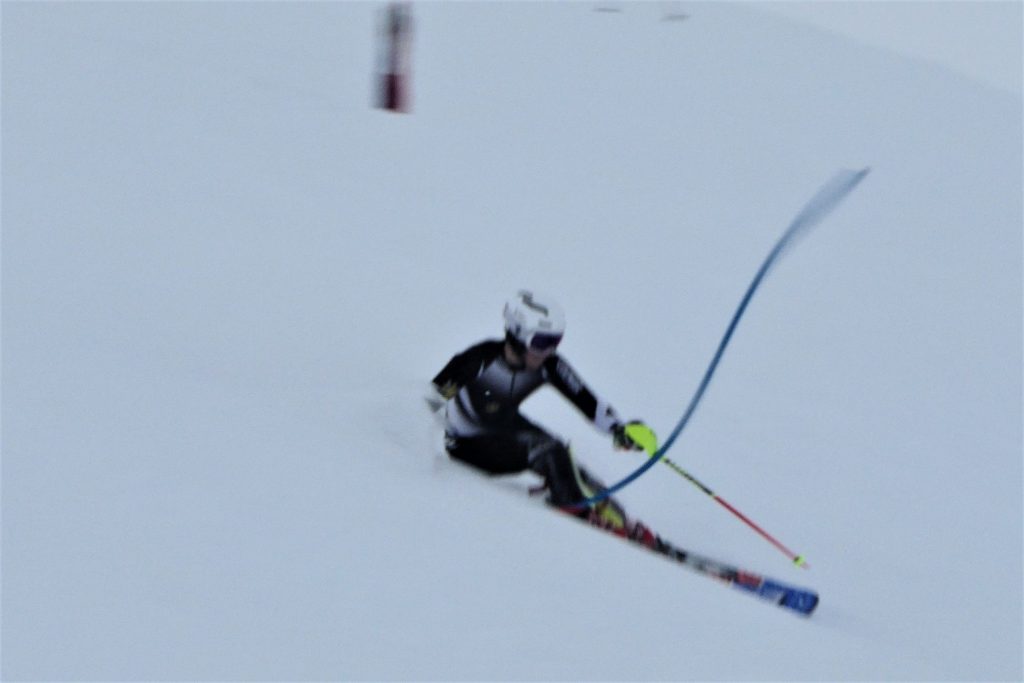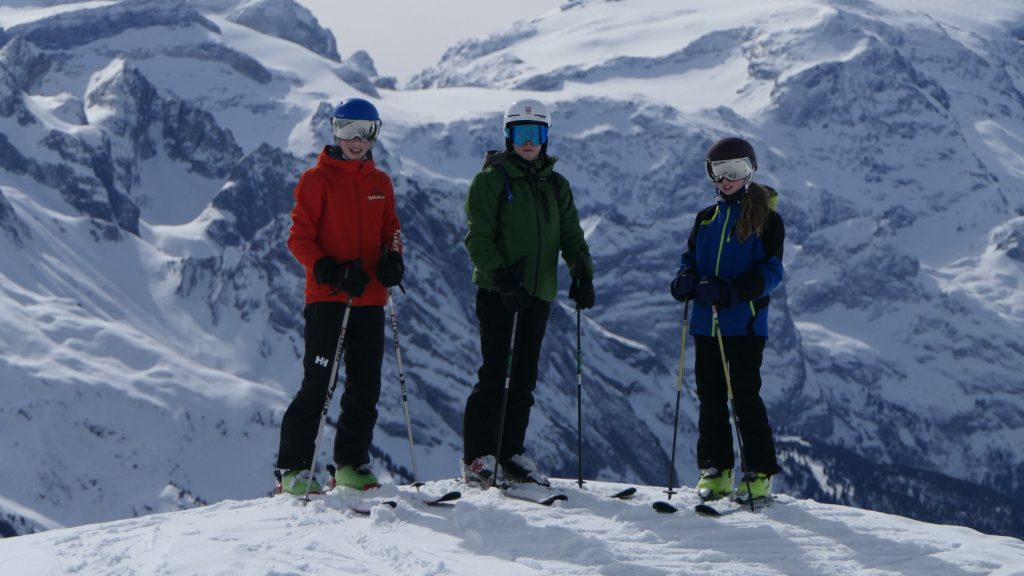Warning: more than one of my young students have ended up at university studying astrophysics – it seems possibly to be an unintended consequence of something I’m teaching.
The pole is not being balanced – it is part of a “dissipative, feedback driven disequilibrium system” – in other words – just look at the pole handle and the brain works out the rest. The brain did the same trick for us when we learned to walk and ride a bicycle. The reason we find skiing great fun and inspiring of a sense of freedom is because it greatly amplifies and exploits this process. However this amplification relies on skill – but the real key to accessing it is hidden in the reality that it has nothing at all to do with “balancing”. By day four I suspect the boys will be able to stabilise the pole for about a minute.
Slalom
Harrison: 20.34 seconds
Alex: 21.43 seconds
Eilidh: 21.72 seconds
If we can get angulation and carving to work a bit in the next two days then it should reduce the times by two or three seconds.
Pivot
Great improvement today. The immediate goal was to greatly reduce unnecessary body rotation and twisting and replace those things with clearly understood efficient mechanics.
We started off with side slipping – through using the centre of mass (CoM) for control. Move the CoM slightly downhill and you start to slide sideways – then move it uphill to stop. Very small movements have huge effects. Try to keep the feet close together to keep both skis on their uphill edges.
Next is the “Joystick Control” where including a small amount of forward displacement of the CoM causes forward diagonal side slipping and backward displacement of the CoM along with downhill displacement causes backward diagonal side slipping.
The first goal here is to raise awareness of the CoM.
Controlling the CoM for pivoting requires a strong pole plant – weight must go onto the pole and the uphill ski (normally) – then the CoM must be directed straight (no rotation) between the pole and the ski tips – far enough that the skis will swing automatically into the fall line. This is aided by getting forward onto the balls of the feet. When starting from a standstill with skis directly across the hill the pole must be planted downhill and behind the feet so as to avoid obstructing the body as the skis swing downhill. The skis must initially be on their uphill edges – as in any side slipping related action.
When the skis slip around to point downhill the edges will automatically change with the new edges also being “uphill” and hence “braking”. However – the CoM must continue to move in toward the pole even more strongly for completing the turn so that the front of the ski continues to drive you inwards. The usual mistake here is in the second half of the turn people give in to gravity instead of fighting it by moving in toward the ski pole. You only give in to gravity after the turn is over.
Previously Eilidh had major body rotation – until she understood this process. The change is impressive!
The second goal of this pivot exercise is to teach that centrifugal force is an illusion. Of course this was met with the minor obstacle that none of the children have ever heard of centrifugal force.
Let’s just say that the only force that exists from a turn itself is a deflection inwards from a straight line – and you have to create this by working “inward” with the skis – moving the CoM inward and always pulling everything inward – never stemming or pushing the skis outward or moving the body (CoM) outward.
The third goal was to communicate how all of this together works by initiating your turn with “early pressure” by extending the uphill leg while still on the uphill edge of the uphill ski – forcing the CoM into the next turn and getting the ski to grip right from the start. Eilidh was the one who really got it today.
Angulation
There was mixed success with angulation – but it is one of the hardest things to learn.
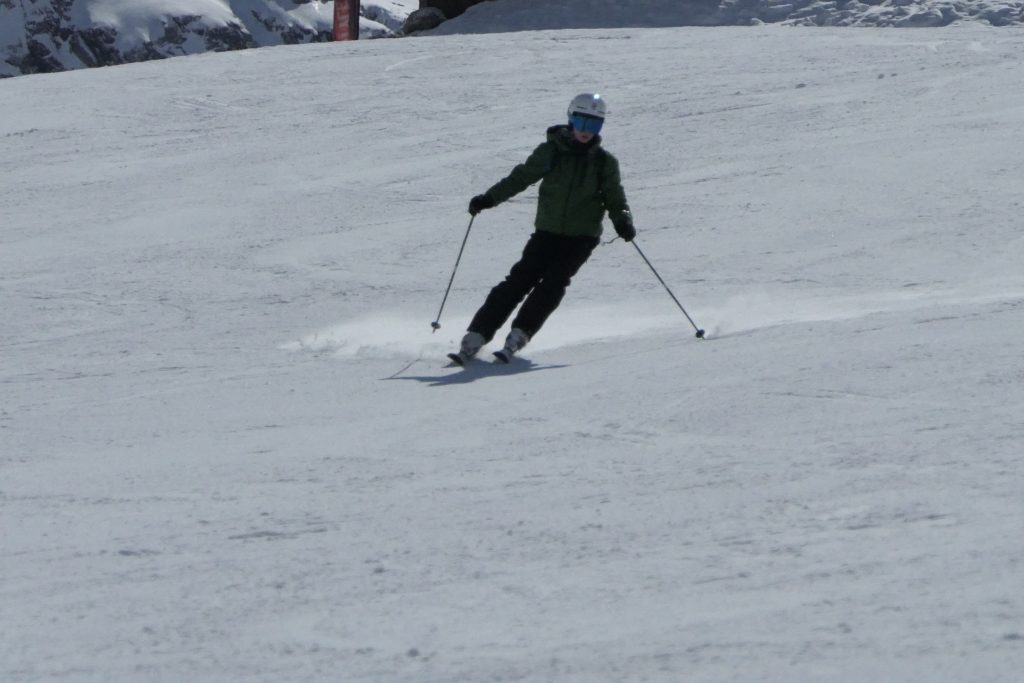
For more consistency Harrison has to get early pressure on the uphill ski at the turn initiation. Standing solidly early on the new outside leg – extending it – will make natural sense out of the angulation as it is about orienting the body on one leg.
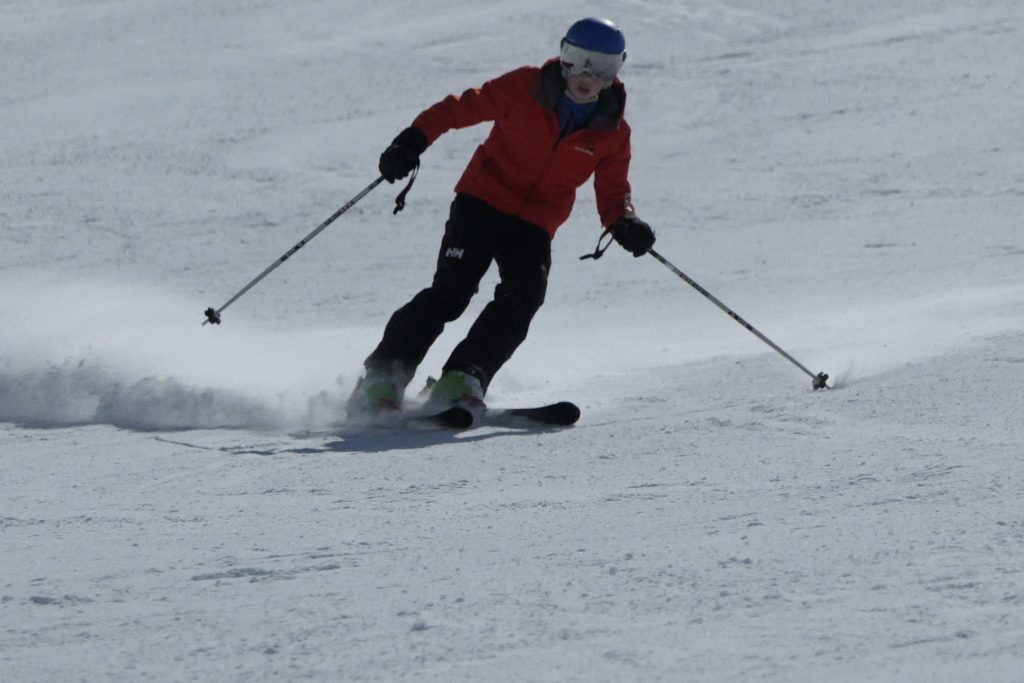
Same story for Alex – still not standing properly on the outside leg – hence less angulation than was there even before working on this. We’ll focus on this tomorrow to sort it out.
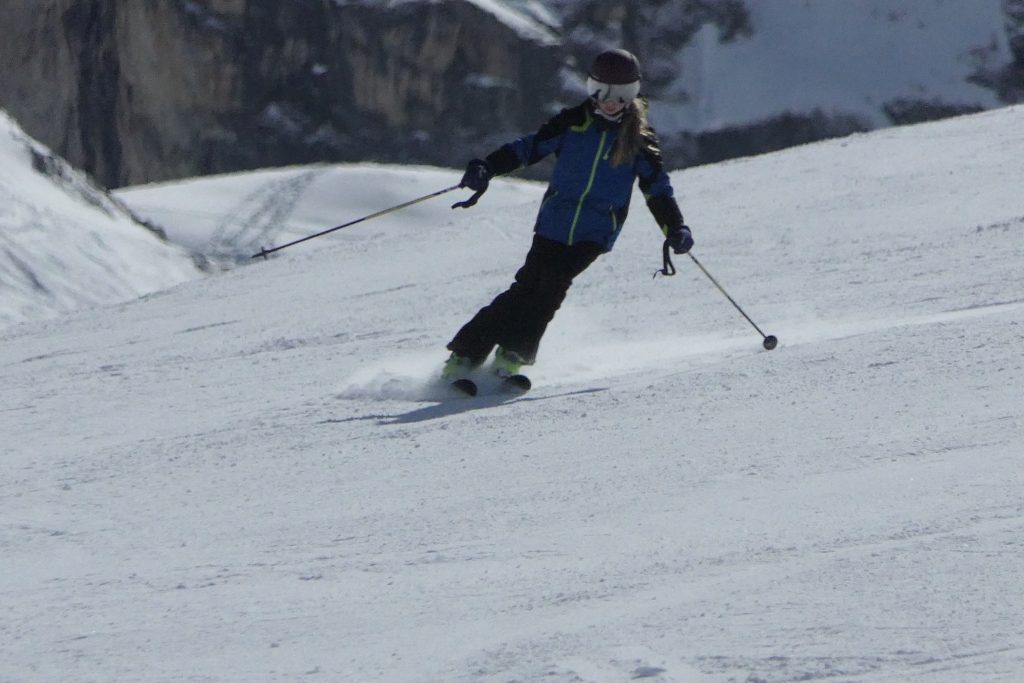
Definite racing potential here!
Abdominal Postural Muscles reflex
I’ve had to strongly simplify the angulation explanation – but still try to retain the essential core. Each student was individually tested – standing still across the slope – holding a ski pole horizontal in front with the hands underneath. The instruction was to tilt slightly forward from the hips – toward the ski tips and then without changing any of this rotate the pelvis to face downhill – in this case pushing the bottom slightly uphill. When I pressed down on the ski pole centre each one felt their lower abdomen automatically contract. This is for protection of the lower back. The contraction cannot be made voluntarily – it is purely a reflex and requires correct alignment of the skeleton.
Traditionally angulation is derived from “anticipation” a.k.a. “facing the upper body downhill from the shoulders” . This is absolutely wrong and extremely dangerous for the spine. Consequently there is no simple way to teach this correctly. Patience is required. I used the model of a slalom skier clearing poles – with the body passing the inside of the pole and the skis going on the outside to show how the shoulders continue to follow the skis and only the pelvis is truly engaged in angulation – protecting the spine. To be honest – the students were great and progress was better than expected.
